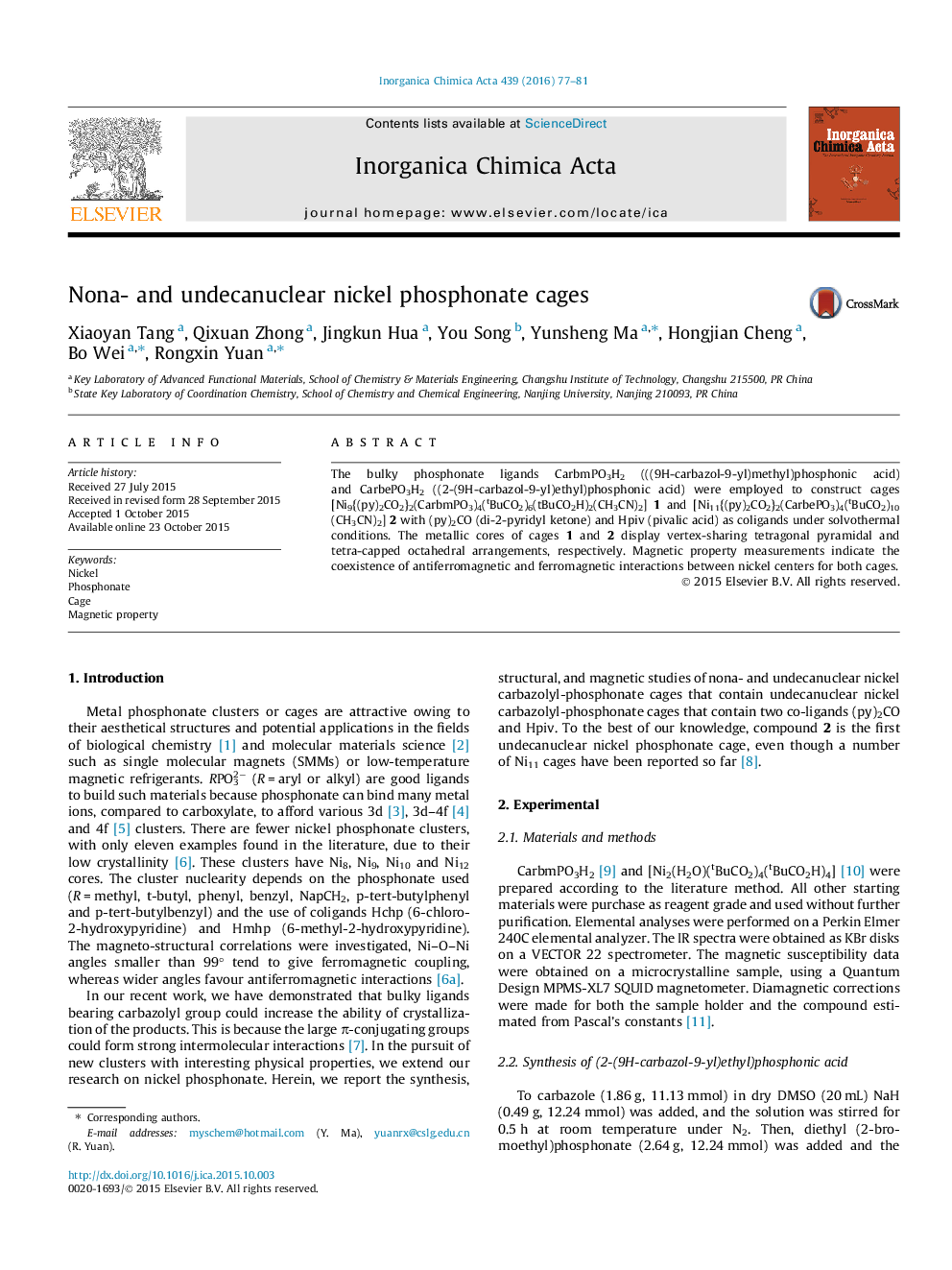| Article ID | Journal | Published Year | Pages | File Type |
|---|---|---|---|---|
| 1312042 | Inorganica Chimica Acta | 2016 | 5 Pages |
•Phosphonic acids bearing carbazolyl group were employed to build two odd numbered nickel cages.•Ligand (py)2CO experiences in-situ formation of deprotonated anion gem-diol form.•Both ferromagnetic and antiferromagnetic interactions between the nickel centers were observed.
The bulky phosphonate ligands CarbmPO3H2 (((9H-carbazol-9-yl)methyl)phosphonic acid) and CarbePO3H2 ((2-(9H-carbazol-9-yl)ethyl)phosphonic acid) were employed to construct cages [Ni9{(py)2CO2}2(CarbmPO3)4(tBuCO2)6(tBuCO2H)2(CH3CN)2] 1 and [Ni11{(py)2CO2}2(CarbePO3)4(tBuCO2)10(CH3CN)2] 2 with (py)2CO (di-2-pyridyl ketone) and Hpiv (pivalic acid) as coligands under solvothermal conditions. The metallic cores of cages 1 and 2 display vertex-sharing tetragonal pyramidal and tetra-capped octahedral arrangements, respectively. Magnetic property measurements indicate the coexistence of antiferromagnetic and ferromagnetic interactions between nickel centers for both cages.
Graphical abstractTwo odd numbered nickel phosphonates have been obtained under solvothermal conditions. Magnetic property measurements indicate the coexistence of both antiferromagnetic and ferromagnetic interactions between nickel centers for both compounds.Figure optionsDownload full-size imageDownload as PowerPoint slide
